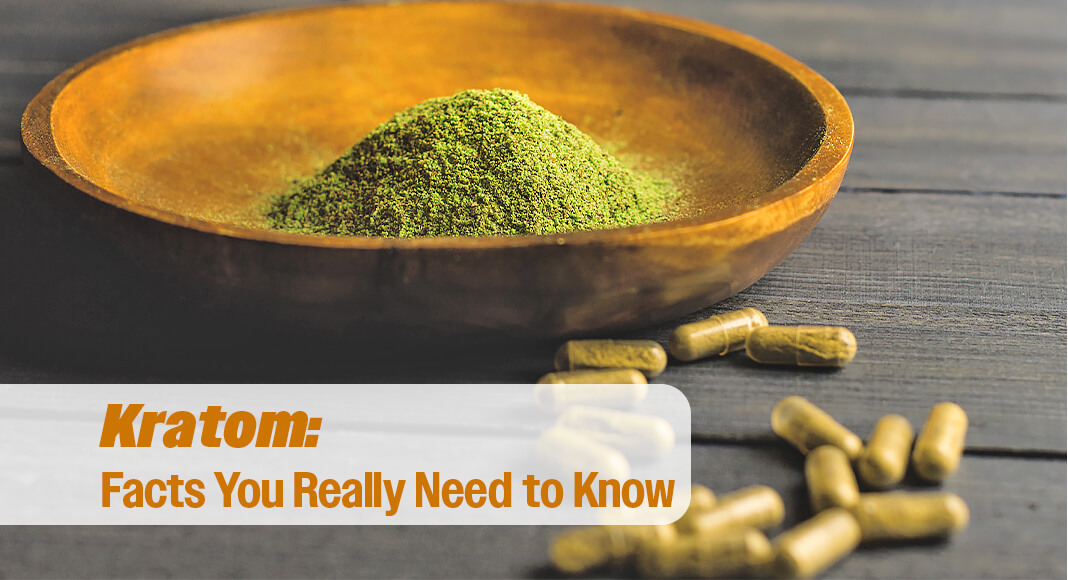
Mega Doctor News
BRYAN-COLLEGE STATION, Texas— Kratom, a botanical supplement native to Southeast Asia, is often used for its ability to induce opioid-like euphoria, depending on the dosage. Although it is currently legal to purchase at CBD and smokes shops in the United States, the U.S. Food and Drug Administration (FDA) published a news release on July 29 recommending that 7-hydroxymitragynine (7-OH)—a concentrated byproduct of the kratom plant—be classified under the Controlled Substances Act (CSA) to help protect Americans from dangerous, illegal opioids. The agency expressed concern that the supplement’s reputation as a natural and safe remedy downplays its potential dangers.
Joy Alonzo, PharmD, M. Engineering, a clinical associate professor in the Department of Pharmaceutical Science the Texas A&M University Irma Lerma Rangel College of Pharmacy, warns against using kratom due to its unregulated properties and unpredictable dosages. She explains what kratom is, how it affects the body and the potential risks when used for pain relief, sedation or euphoria.
How kratom works.
Kratom is a tropical evergreen tree of the Rubiaceae family native to Southeast Asia. Its leaves contain the alkaloids mitragynine and 7-OH, which primarily act on the brain’s mu-opioid and kappa-opioid receptors. At low doses, kratom produces stimulant-like effects; at higher doses, it acts more like an opioid, providing pain relief, sedation and euphoria.
Mitragynine, a partial opioid compound, functions as a direct agonist at the mu-opioid receptors—the same receptors targeted by all opioids, Alonzo said. This interaction is what produces the drug’s pain-relieving and psychoactive effects.
Mitragynine is similar in action to tramadol, a commonly prescribed partial opioid approved by the FDA for pain management, she said. However, mitragynine is estimated to be about 13 times more potent than morphine at the kappa-opioid receptor.
“Morphine is the opioid by which we judge all other opioids,” Alonzo said. “Its potency is considered ‘one,’ and we compare everything else—heroin, fentanyl, carfentanil and others, both legal and illegal—against it.”
Kratom regulation and classification.
All opioids carry addictive potential—it’s a matter of time and exposure, Alonzo said. In 2021, the World Health Organization’s (WHO) Expert Committee on Drug Dependence (ECDD) concluded that there is insufficient evidence of adverse effects that would classify the main active compounds in kratom as Schedule I substances under the Controlled Substances Act (CSA). Although kratom is not currently federally classified as a controlled substance, it can lead to dependence, and the FDA considers it a substance of concern. Users may develop tolerance and cravings similar to opioid withdrawal. Additionally, some of the negative side effects associated with kratom are similar to opioids, including dose-dependent respiratory depression and overdose.
“Kratom never has been, and most likely never will be, approved by the FDA for any medical purpose of any kind,” said Alonzo, who is also chair of the Texas A&M Health Opioid Task Force. “Now, that’s not uncommon. Most supplements, vitamins and similar over-the-counter products are not FDA approved or regulated, either—but that doesn’t necessarily make them unsafe to use. However, the similarity of the negative side effects of kratom with those of opioids should caution consumers.”
The primary responsibility for ensuring the safety and accurate labeling of supplements—such as vitamin C or melatonin—falls on the manufacturers, but the FDA still plays an important role in regulating them. The agency reviews labels to ensure accurate information and prevent false medical claims, and monitors reports of adverse effects or safety concerns.
A supplement’s lack of FDA approval doesn’t necessarily indicate it is unsafe—but it does place more responsibility on consumers to evaluate product quality and potential risks. When the FDA determines a product to be unsafe, the agency may issue public warning letters or alerts to inform the public of risks. Some products may be subject to enforcement actions or recalls, which may be voluntarily performed by manufacturers or mandated by the FDA.
“Until Kratom is subjected to the full scrutiny of regulatory oversight, my recommendation to consumers is to use extreme caution. Individuals considering kratom for self-treatment should discuss with a pharmacist or physician, especially if they have underlying health conditions or take other medications,” Alonzo said.
Side effects of kratom.
Common side effects of kratom include nausea, constipation, dizziness, drowsiness, itching and mild respiratory depression. Although these symptoms may appear manageable, more serious health risks have also been reported. These include seizures, liver toxicity, psychosis and pulmonary edema—a condition in which fluid builds up in the lungs, making it difficult to breathe—as well as the risk of overdose and death.
“In addition to these effects, kratom products are often produced and distributed with non-medicinal ingredients, particularly because the supplements are unregulated,” Alonzo said. “These contaminants can significantly increase the risk of adverse reactions, especially when combined with other medications or substances.”
Distribution of kratom.
Kratom is widely sold in vape, CBD and smoke shops across the United States, including several in College Station, Texas. It’s available in various forms—most commonly capsules, powders, liquid shots and drinks, gummies and other edibles and, increasingly, disposable vape pens containing kratom extracts.
In Texas, kratom is legal but regulated under the Kratom Consumer Protection Act, limiting synthetic 7-OH concentration to 2%. However, concerns about kratom’s safety prompted Texas lawmakers to propose Senate Bill 1868. The bill, passed by the Senate on April 24, 2025, aimed to regulate kratom production and sales but ultimately died in the House Public Health Committee and did not become law.
In recent news, the Drug Enforcement Administration (DEA) is reviewing the FDA’s recommendation to schedule 7-OH under the CSA. The FDA raised concern about the ease of access to concentrated 7-OH products and their misleading labeling. This action does not focus on natural kratom leaf products but addresses the clarity and accuracy for labeling 7-OH content—sometimes disguised or marketed as kratom.
“As kratom use continues to grow, the absence of regulation increases risk,” Alonzo said. “The next chapter for kratom in Texas will require clinically informed policy that prioritizes product safety, consumer education and a commitment to harm reduction.”
Potential risks of kratom.
Kratom usage has been linked to numerous overdose deaths in recent years. From July 2016 to December 2017, the Centers for Disease Control and Prevention (CDC) reported 91 kratom-related fatal overdoses, typically also involving other substances. The FDA has identified 44 deaths since 2011, and kratom has been involved in an estimated 1.5% to 1.7% of all overdose deaths from 2020–2022. Alonzo emphasized the need for policy and legislation to consider evidence-based regulation for mitigating harm.
“Some people turn to kratom as a last resort for managing pain or opioid use disorder (OUD) recovery because it’s more accessible than prescription medications due to factors such as affordability or limited access to health care,” Alonzo said.
Because kratom is unregulated, its dosage is unpredictable, and it should not be used for OUD, Alonzo explained. FDA-approved medications like buprenorphine and methadone are manufactured under strict standards, ensuring consistent dosing and medical oversight used to treat OUD. They are prescribed by a clinician as part of a comprehensive treatment plan that includes counseling and other services to provide patients with the necessary resources such as outreach, screening, assessment and referral (OSAR) programs.
“FDA-approved drugs like methadone and buprenorphine are medically managed and used widely in opioid use disorder,” Alonzo said. “That’s the benefit of FDA regulation: The drugs are evaluated, and providers know the exact dose. If a tablet is labeled 4 milligrams, it’s 4 milligrams—that’s your dose. With kratom, you just don’t know.”
The bottom line.
Right now, the future of kratom is at a crossroads in Texas and across the United States, caught between public health caution and consumer demand. The lack of FDA oversight means users cannot be certain of dosage, purity or safety. With safer, medically supervised options available for pain and OUD treatment, Alonzo strongly advises against using kratom and recommends consulting with your health care provider before trying any over-the-counter supplements.
“My recommendation is to avoid kratom due to the inconsistency of products and instead seek medical care,” Alonzo said. “A provider can help manage and treat symptoms or address opioid use disorder if needed, and recommend safer, more effective alternatives.”
Information source: TEXAS A&M HEALTH










